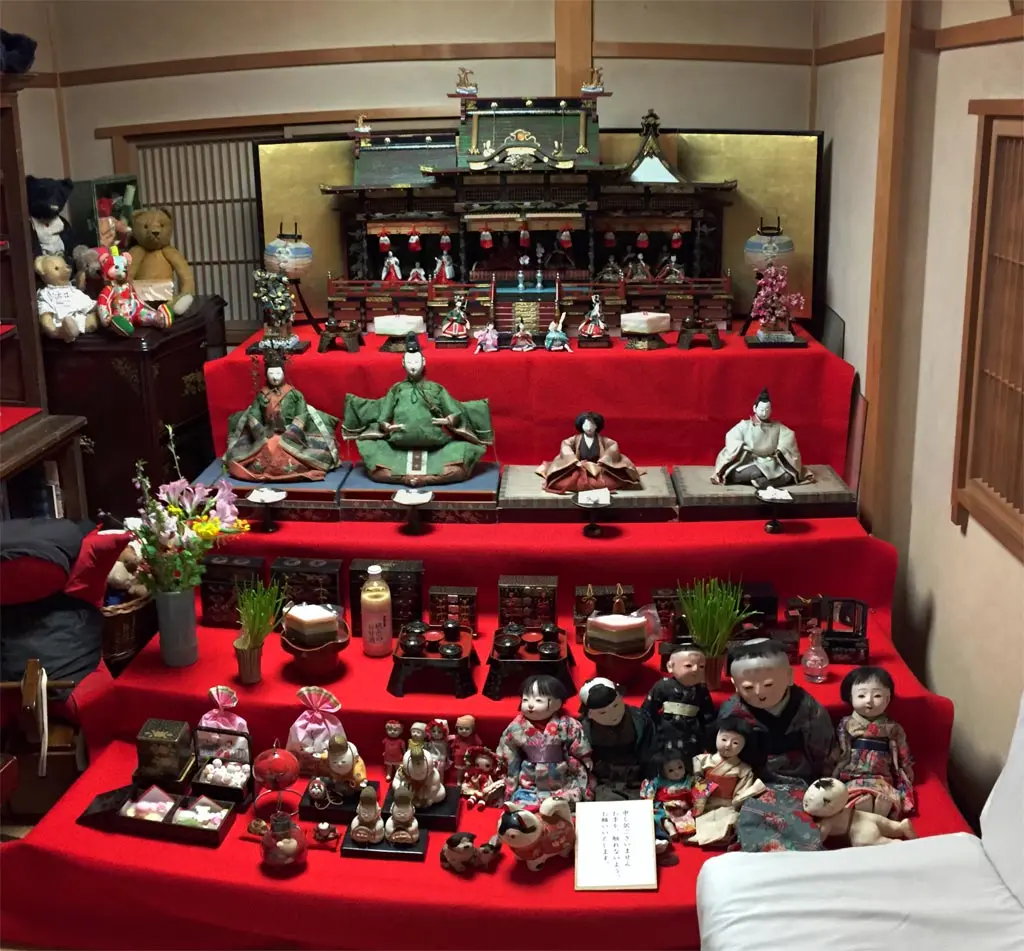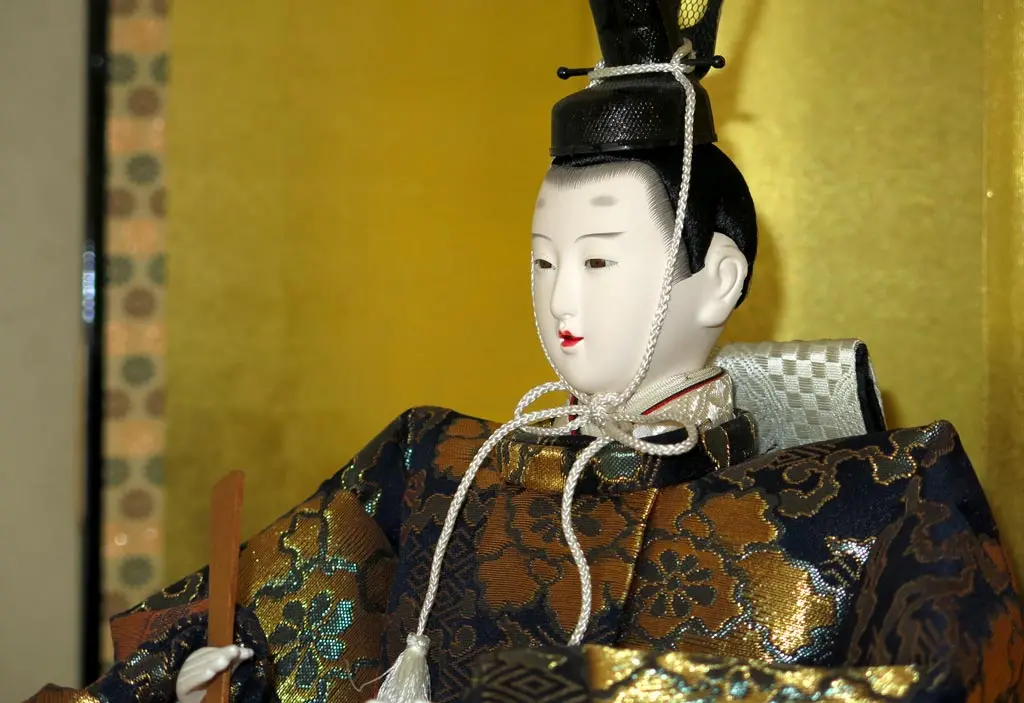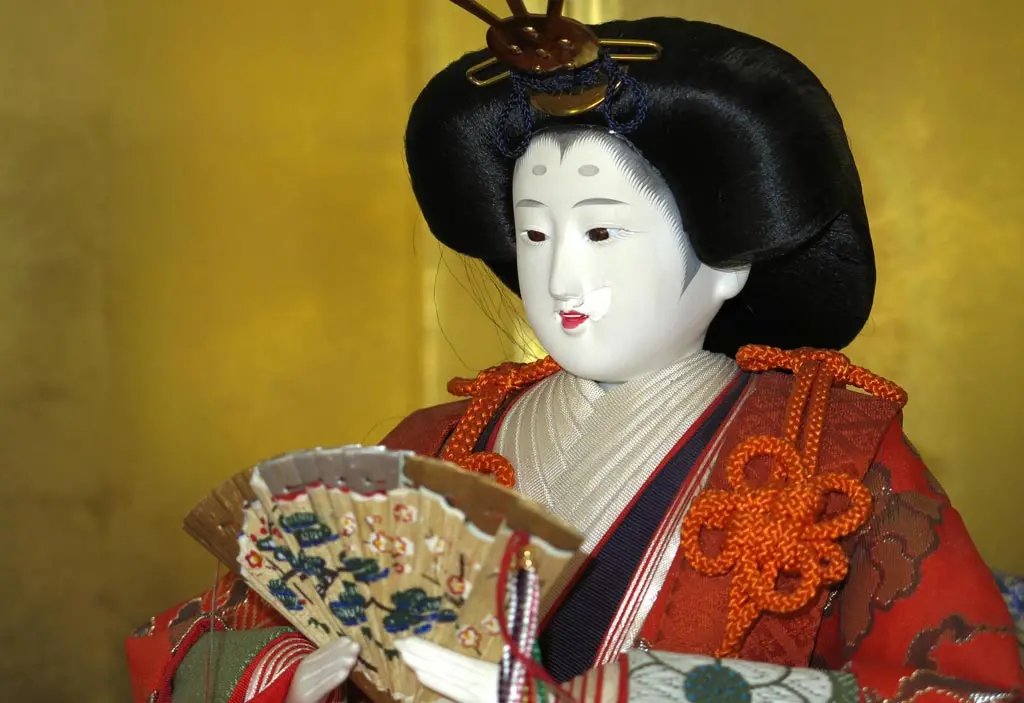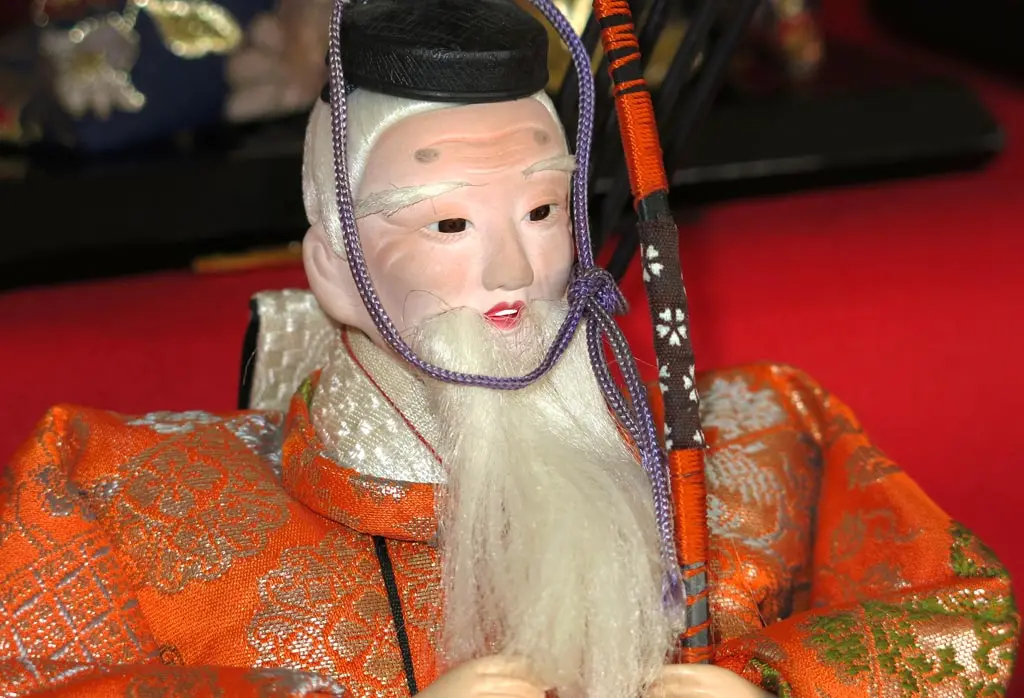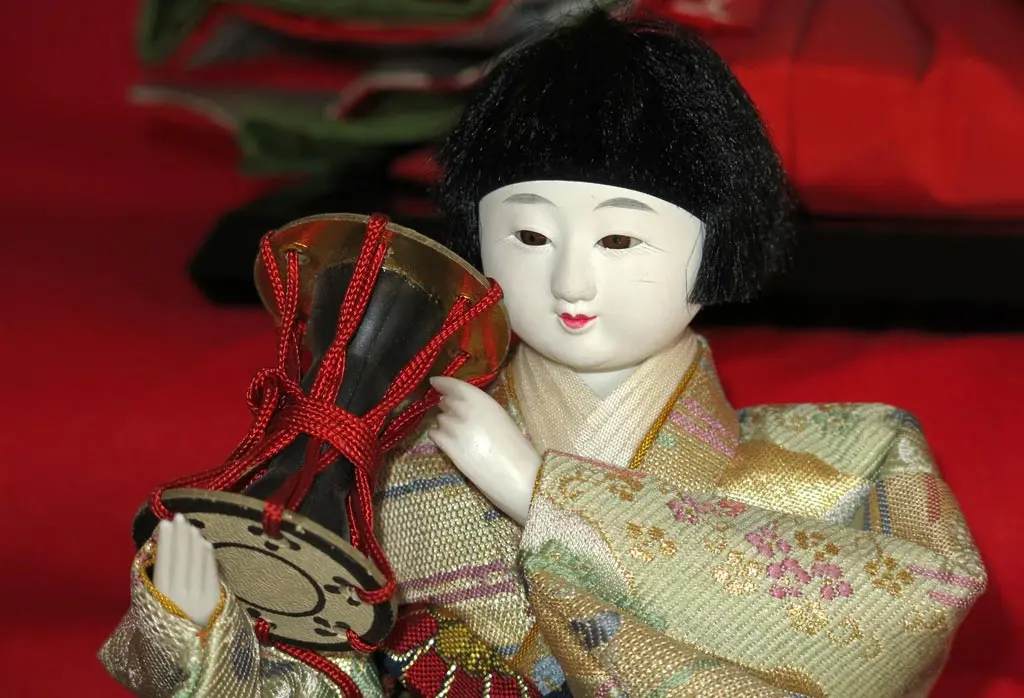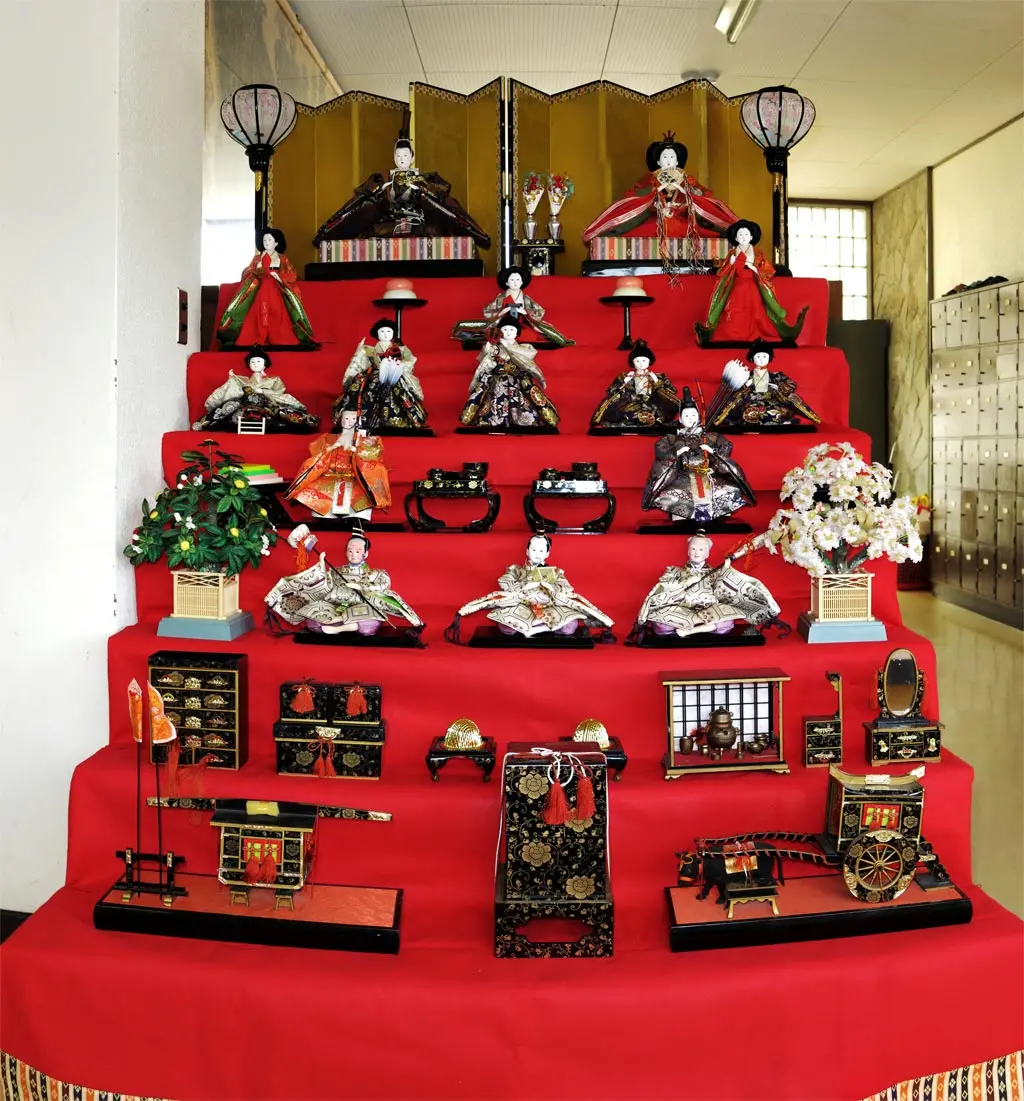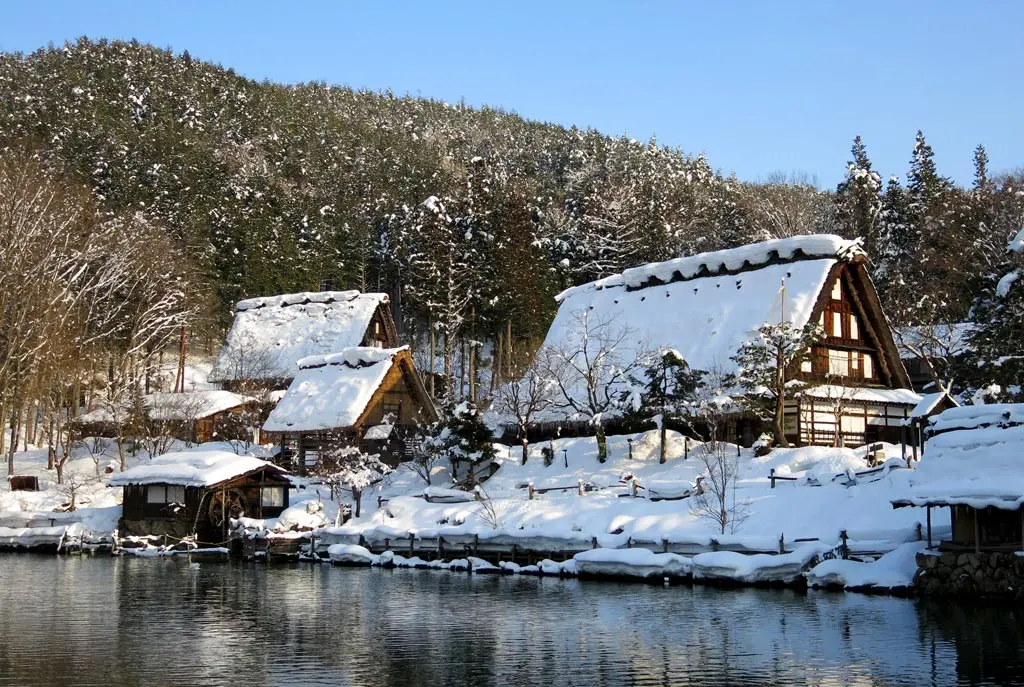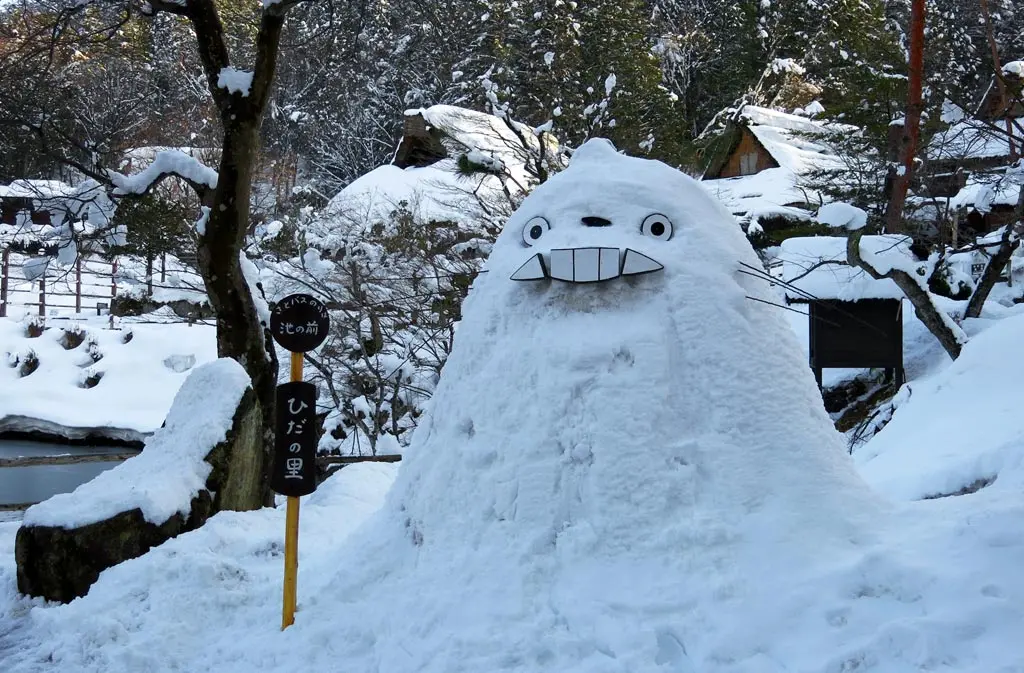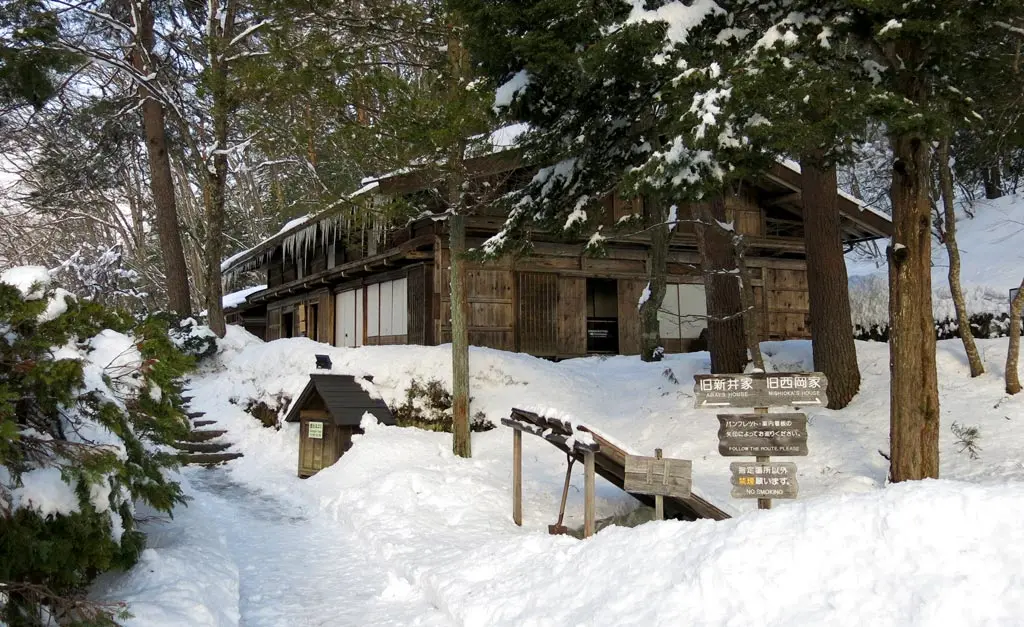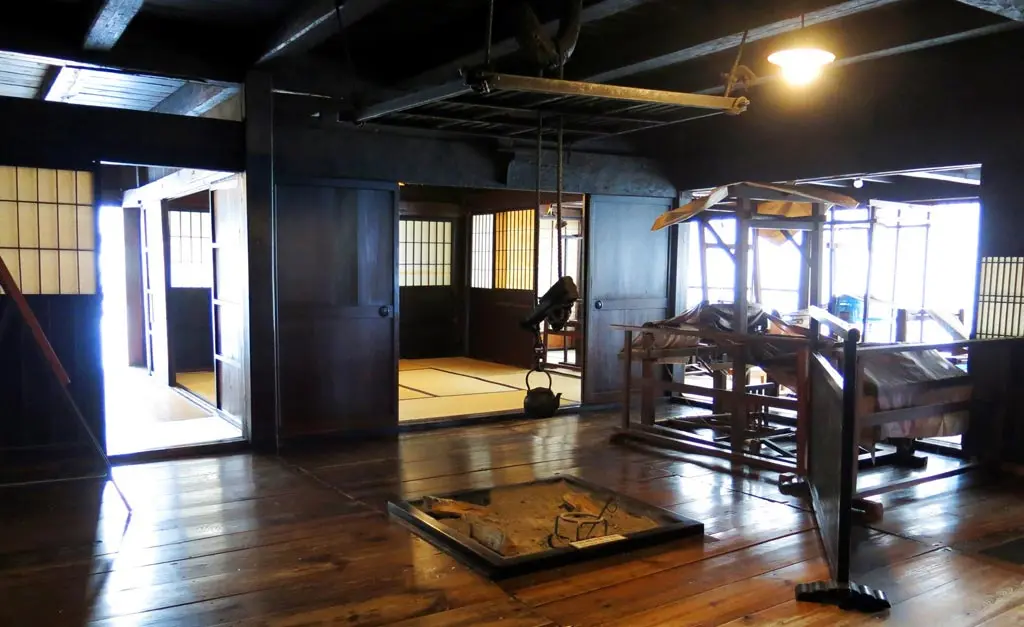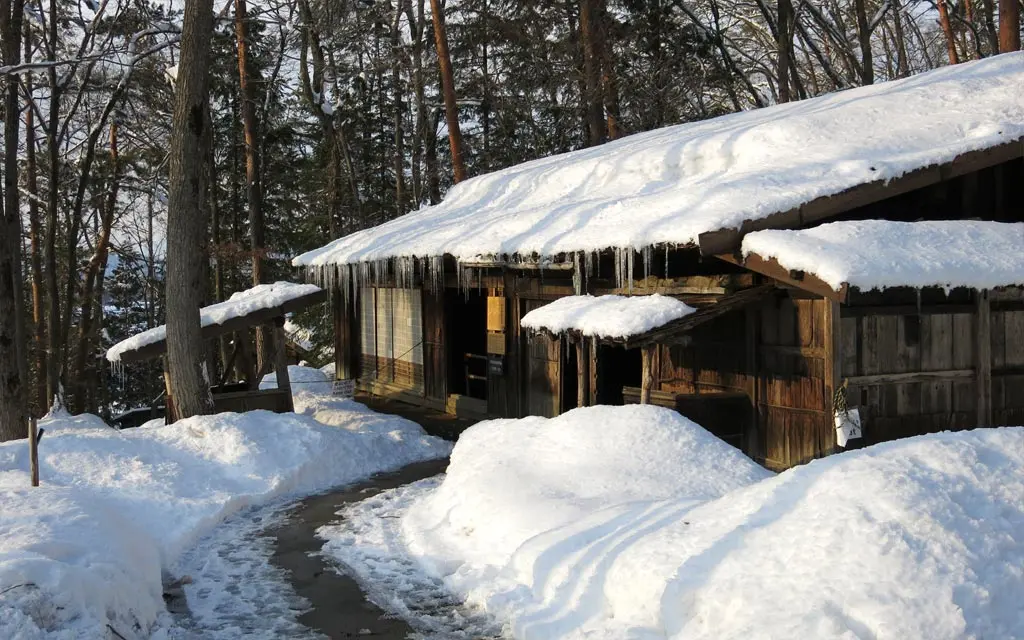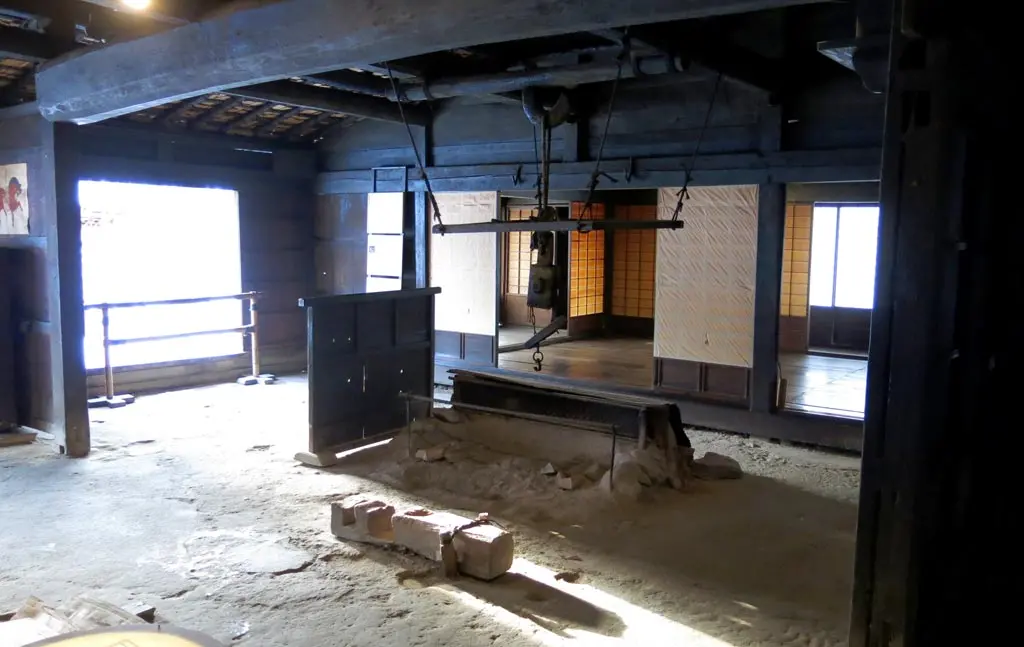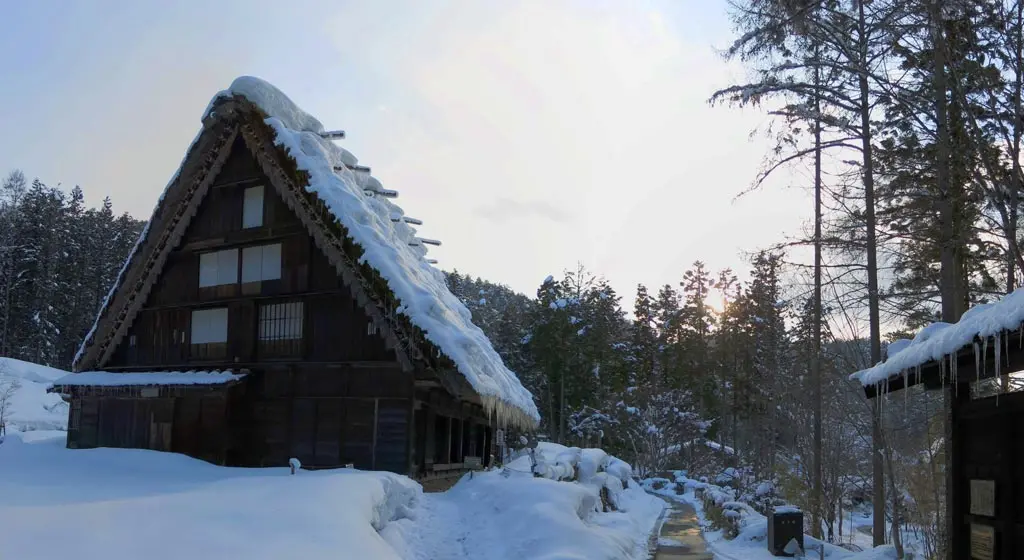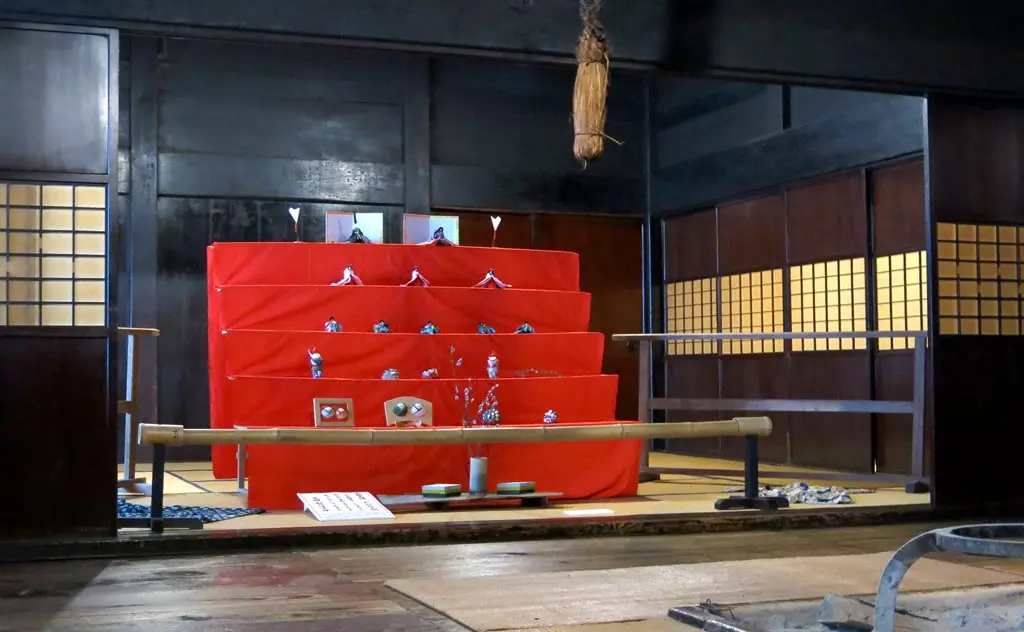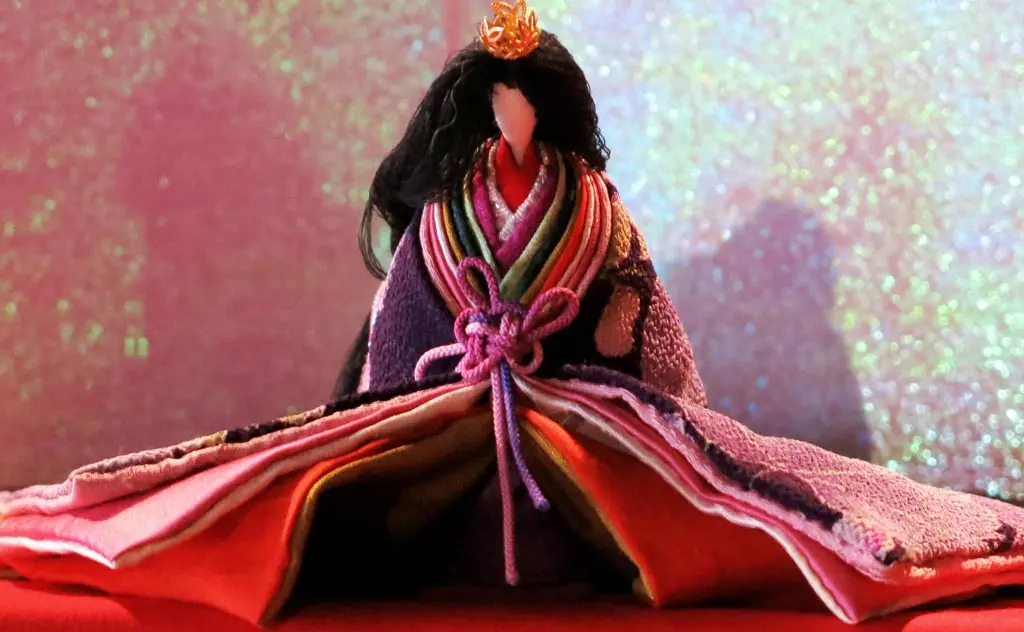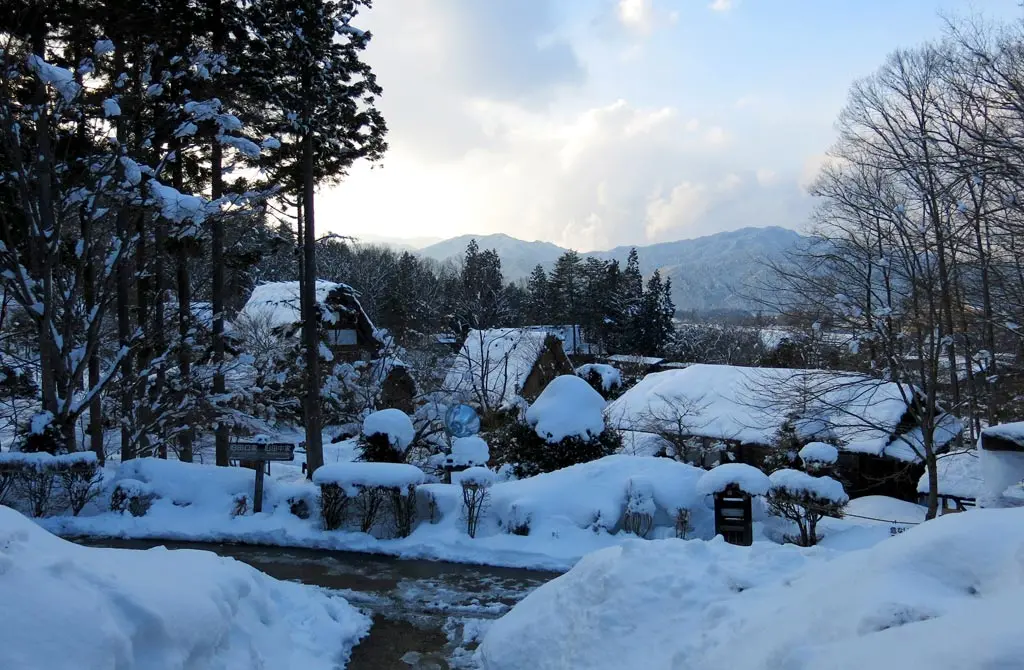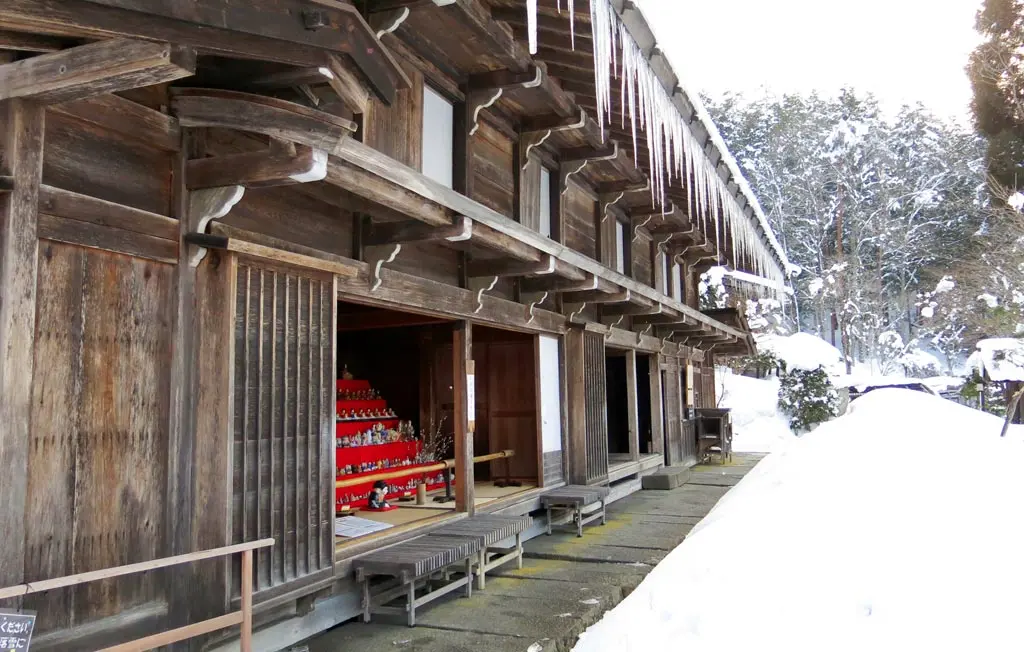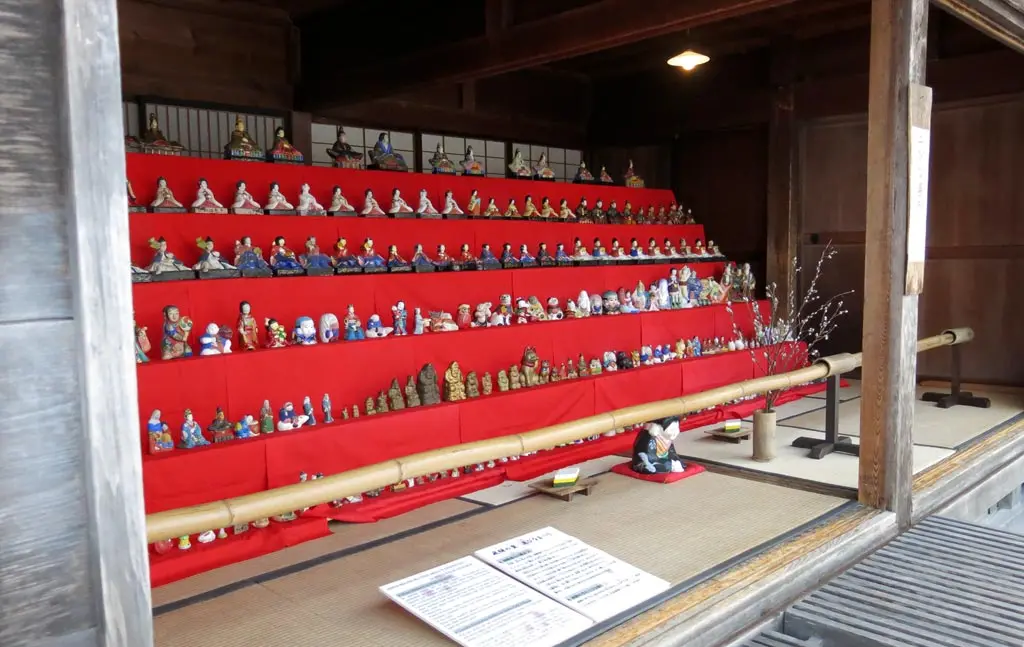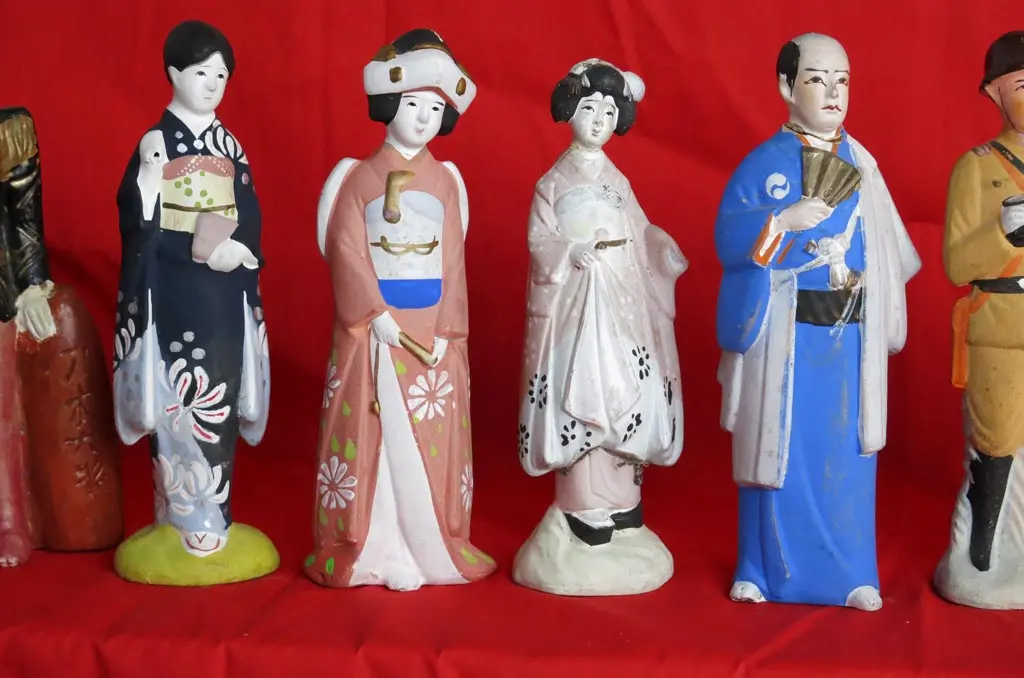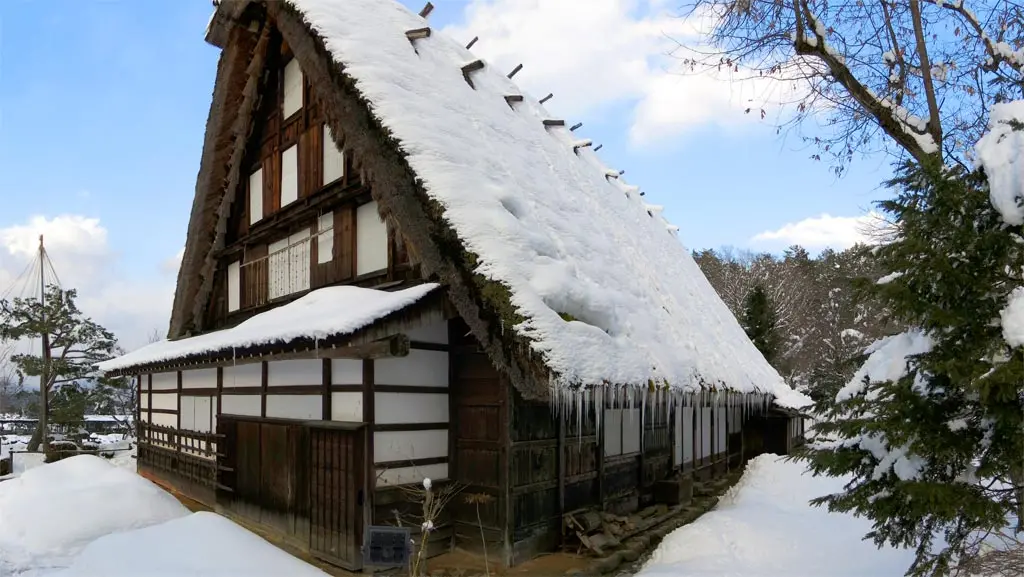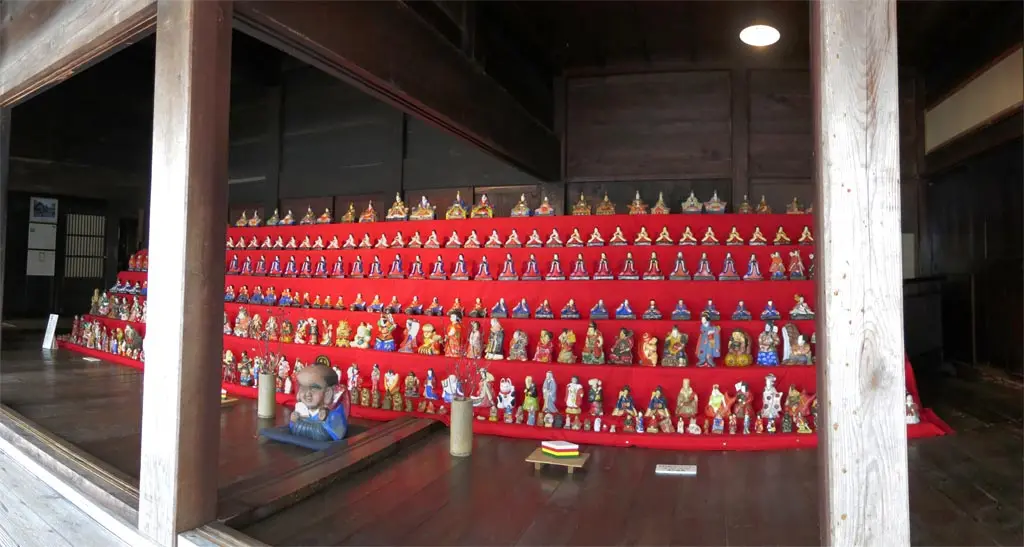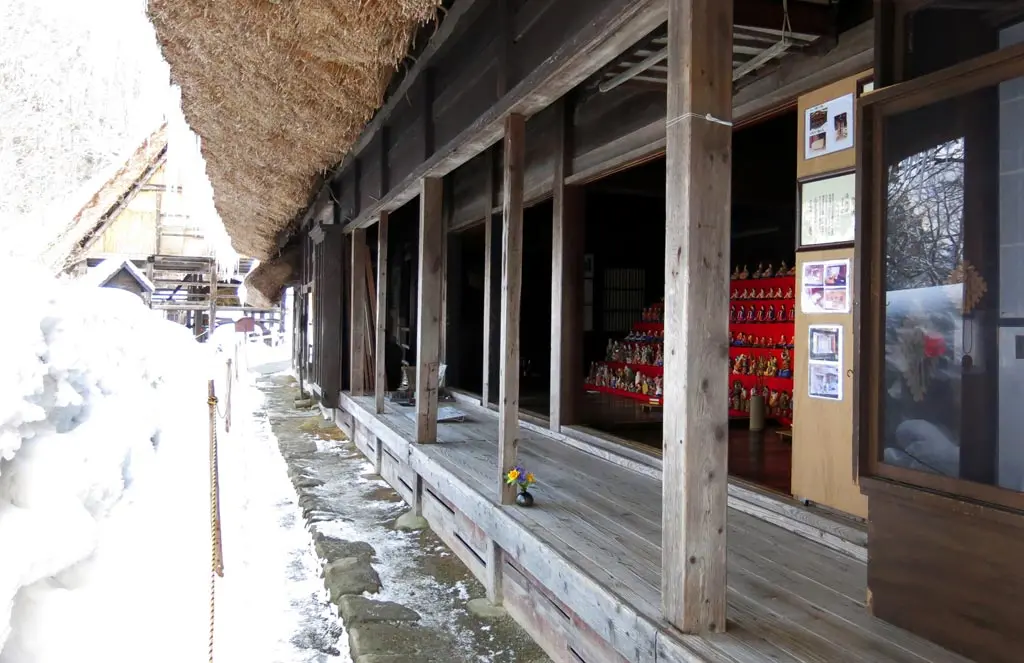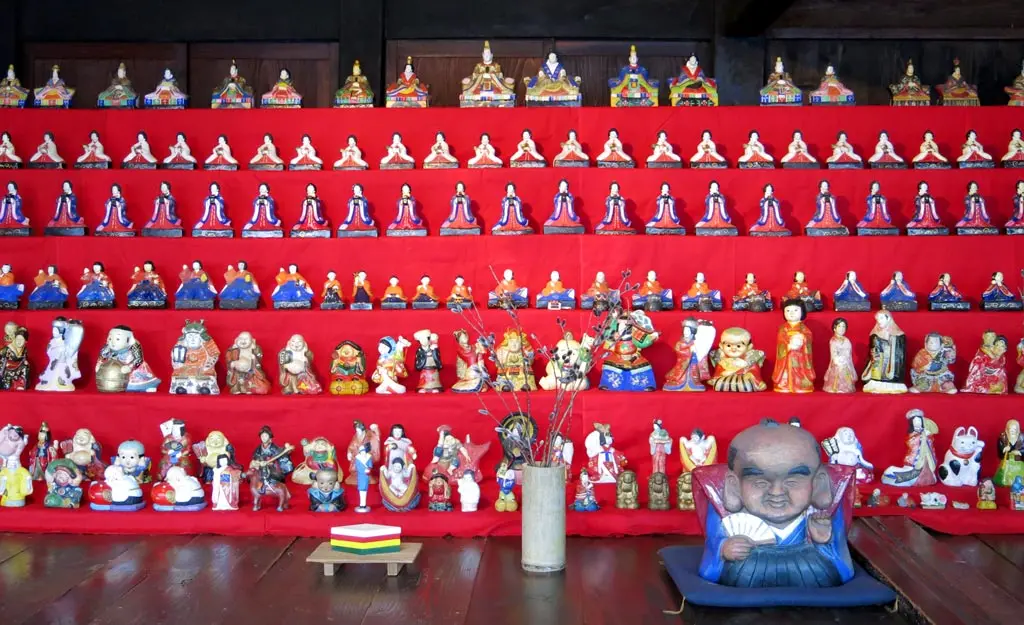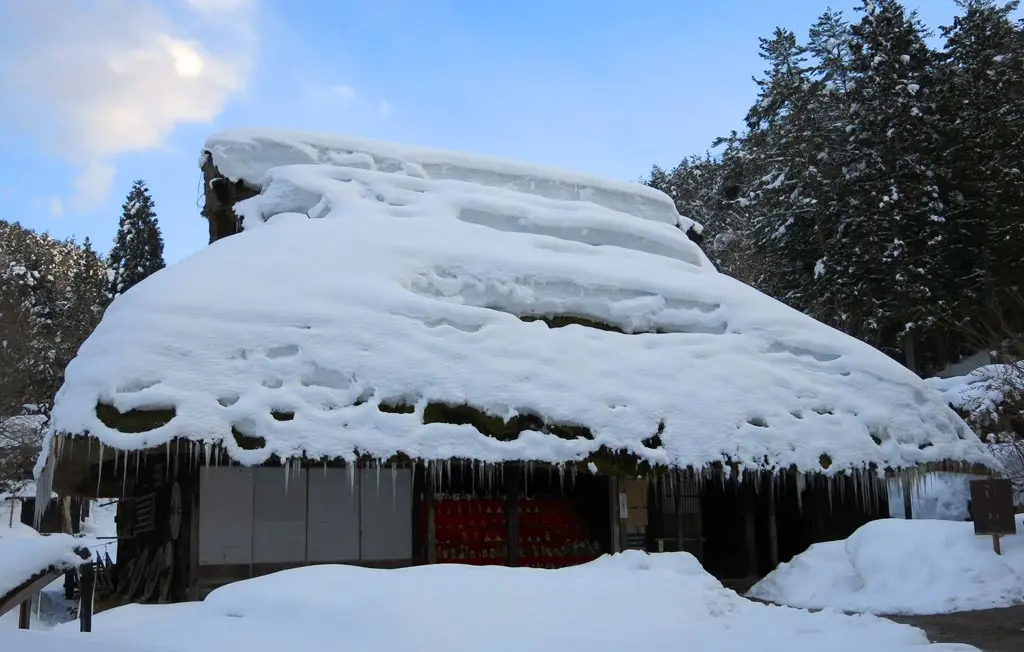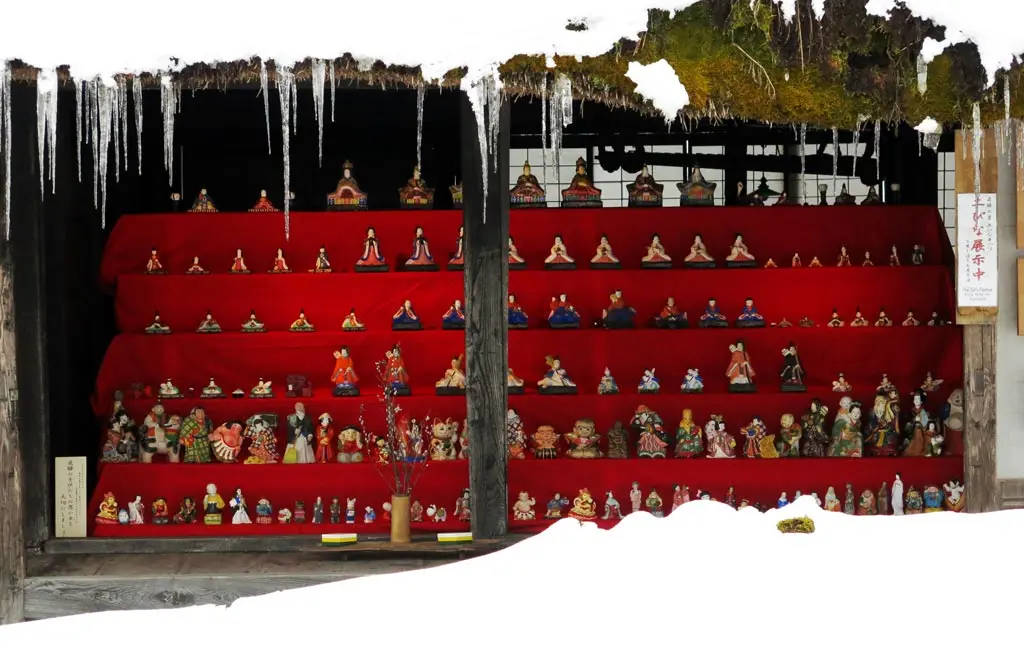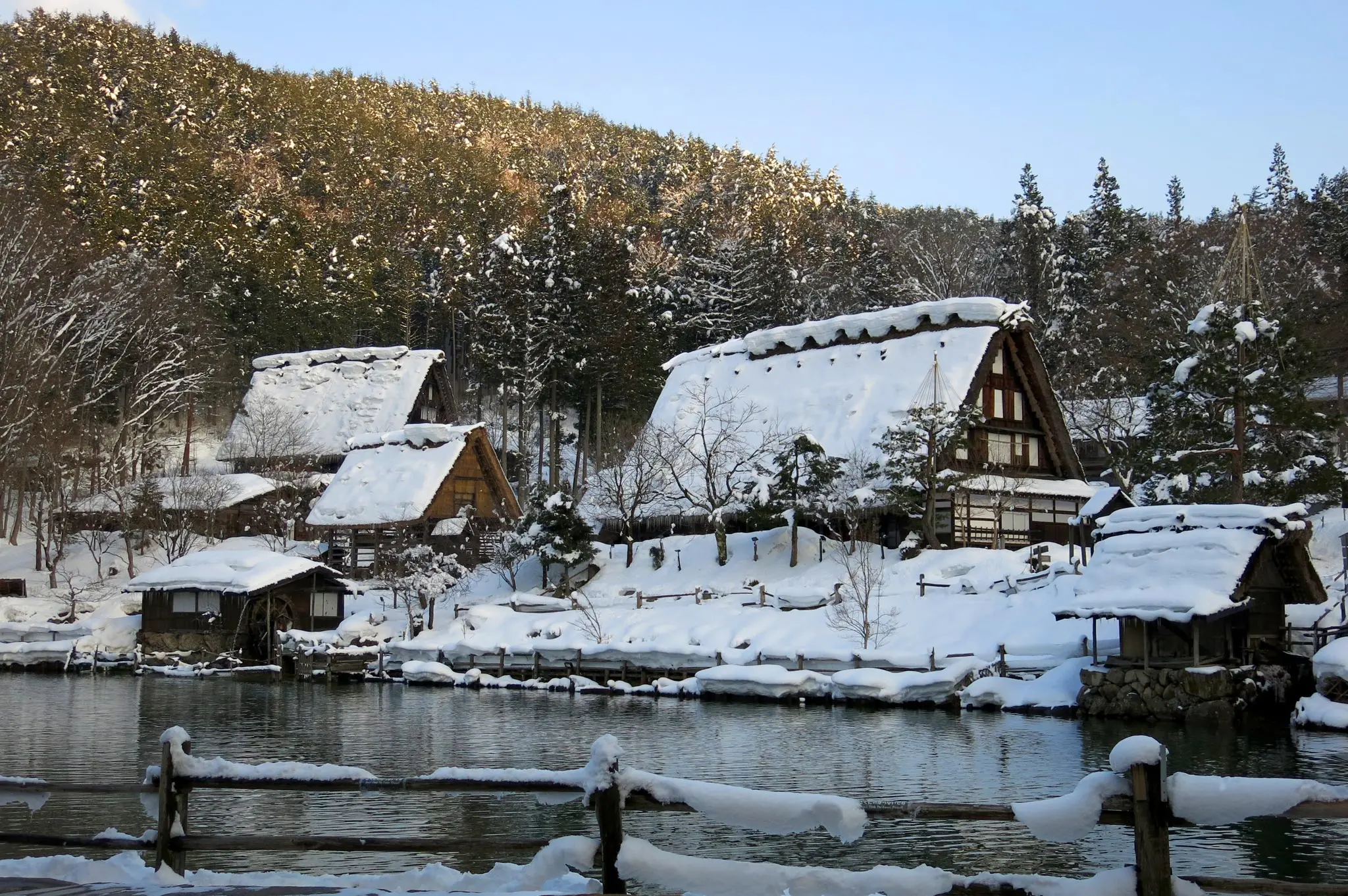March 3rd is Hina Matsuri in Japan, also known Girl's Day. It is celebrated by erecting these specific doll displays in homes and businesses representing the imperial court structure of the Edo Period.
At Nishi Elementary 西小学校, they got their display on that Monday, so during lunch break, the principal and several 6年生 girls put it together.
Given the probable extensive cost of this display, I think it rotates to different schools each year. Nishi-sho did not have a display last year. But a different school of mine, which doesn't have a display this year, did.
The dolls are quite elaborate, and very detailed.
According to Wikipedia, these displays has 7 specific tiers. The top tier is reserved for the emperor and empress only. The second tier holds the 3 ladies of the court. The third tier holds the 5 male musician of the court. The fourth tier has 2 court ministers and some tables with bowls. The fifth tier holds the protectors of the empress and emperor, typically farmers or samurai. The sixth tier has furniture and ornaments used within the palace. The seventh tier has things used outside the palace.
Nishi-sho's display has all these things.
Apparently the top five tiers are the most important, and each one of the people and objects have a very specific Japanese name, and a specific placement on the display.
Throughout Japan, Hina Matsuri represents the arrival of Spring, and the end of Winter. That's not really the case in Hida. Not only is there still snow on the ground, but it still continues to snow! It just snowed today, too. As such we have our own regional "girl's" festival celebrating Hina Matsuri and the arrival of Spring called Ikibina Matsuri. I went to that festival 2 years ago.
Every year, Hida no Sato, also known as the Hida Folk Village, celebrates Hina Matsuri by setting up 4 displays in houses collectively showing around 800 dolls.
Hida no Sato is an open-air museum on the foothills of Harayama 原山 and the Matsukura Castle Ruins 松倉城. It's a collection of more than 30 old homes built 100 to 500 years ago from all around Hida. These homes have very distinctive thatched roofs to protect against the harsh snow, and keep the warmth of the fire inside. As these homes became abandoned, or their land would be renovated, the city of Takayama unearthed these houses, and moved them here.
I went here on March 12th after another beautiful Spring snowfall. Everything has a light dusting of snow.
Near the entrance was a snow Totoro. After the amazing warm days we'd been having, much of him had already melted, turning his smile into a slight frown.
I walked around, and went in a few houses.
I first went to Arai-san's house, which was moved from Kiyomi village 清見村. Inside were a bunch of artifacts from around the same timeframe. This is also the first official house on the tour of the village.
Next, I went into the second house on the tour, the Nakayabu residence. I did not read the plaque for the house, so I'm not really sure where it's from.
Both these houses looked a lot more modern than the larger thatched roofed homes. Unfortunately, I really didn't have a lot of time to visit all the houses in Hida no Sato, especially at the pace I was going. I arrived only 40 minutes before the gates closed, so I had to be quick in order to visit the homes that had the Hina Matsuri displays.
Next, I went to Wakayama's house, which was the big farm house on east end of the village.
Inside, they had a simple and modest Hina Matsuri display, the most simple and modest display out of all the displays in Hida no Sato.
There are only five tiers with only 10 dolls. The dolls themselves were entirely made out of cloth and yarn, unlike the dolls at Nishi-sho, which had porcelain bodies. Underneath the display was a plaque that mentioned these particular dolls were created using old worn out clothing. Rather than throw the clothing away, they recycled the cloth into these dolls.
I looked around a little bit inside, but then continued. Outside, the sun continued to set in the somewhat cloudy sky.
In yet another prominent house, the Taguchi house, was one of the larger Hina doll displays.
There were around 300 dolls set up on these 6 tiers, which continued to resemble the official tier system. Emperors and empresses were at the top of the display, followed by the female court, followed by the male court. And then followed by whatever they could find. I think they tried to keep things in order of hierarchy, but there were so many dolls, they just fit everything for space.
I continued past Taguchi's House back to the pond, and to Nishioka's House.
This house is the most prominent, and the center piece of the entire Hida Folk Village. It sits centered on the side of the pond. It may be the largest house, too, if not the same size as the largest houses in the village.
Inside, they have a small shop where you can buy trinkets and other crafts. I think they hold one of their crafting classes here too. None of these are available during the week, though.
They had the largest display of Hina dolls in the entire village.
Enough dolls to fit all 7 tiers, though that 7th tier only had smaller than average dolls. In total, there were maybe 350 dolls? 400?
The rest of the dolls that didn't fit in either the Nishioka House nor the Taguchi House, were put into the Tomita House. This is the next house westward from the Nishioka home. It located next to two other very similar homes, probably from the same original village.
The remaining 100 (or so) dolls lie within.
That's pretty much it. I ran through the course quite quickly, and only visited ones that had Hina dolls. It was a weekday so there really wasn't much going on. All the restaurants and souvenir stores in the surrounding area were closing as I got there.
I'll return here sometime and do a full blog post about these homes. I'm definitely interested in where all these houses came from. Some of the surrounding areas still have some of these homes preserved and available to view. Shokawa has its own Folk Village, too.
It's a pretty place. I'd like to see what it looks like in the different seasons.
Last night, one of my schools and I had an enkai to celebrate the end of the year. We had it in a very traditional place near Takayama Shrine, and they were very festive with Hina Matsuri. Near the entrance, they had a rather elaborate display.
